10 Ideas for a Cargo Van Business
Discover how cargo vans support diverse entrepreneurial ventures with their customizability and efficiency, perfect for innovative business models.
Read More
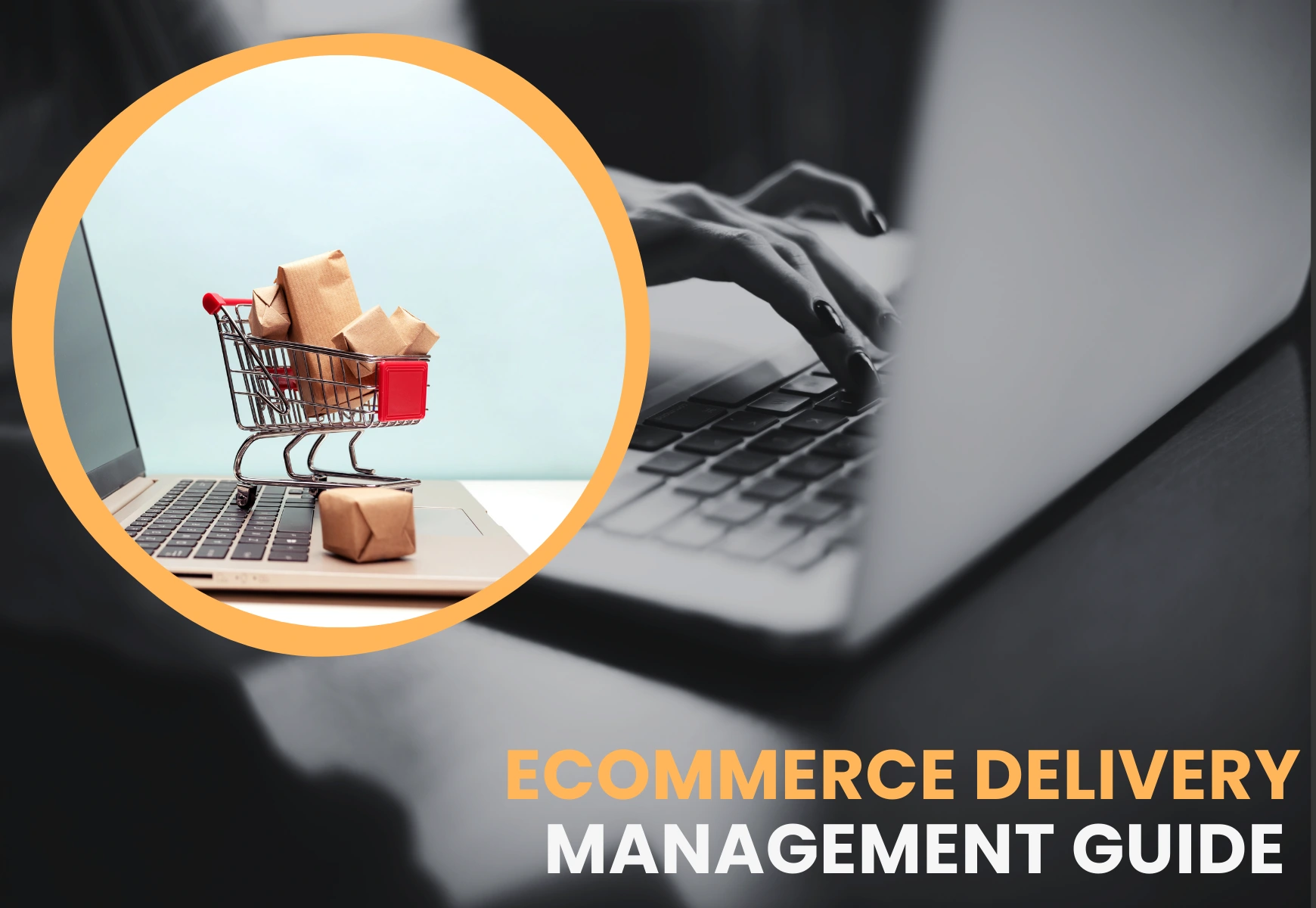
Deliveries are critical to any e-commerce business and essential for maintaining customer satisfaction and operational efficiency.
Whether you're grappling with a backlog of orders or setting up a new brand, mastering delivery management is key.
This guide covers the essentials of ecommerce delivery, from current trends to the importance of integrating advanced technologies.
We'll explore various delivery options, including local and international solutions, and the role of delivery management software in optimizing these processes to enhance efficiency, reduce costs, and improve customer satisfaction.
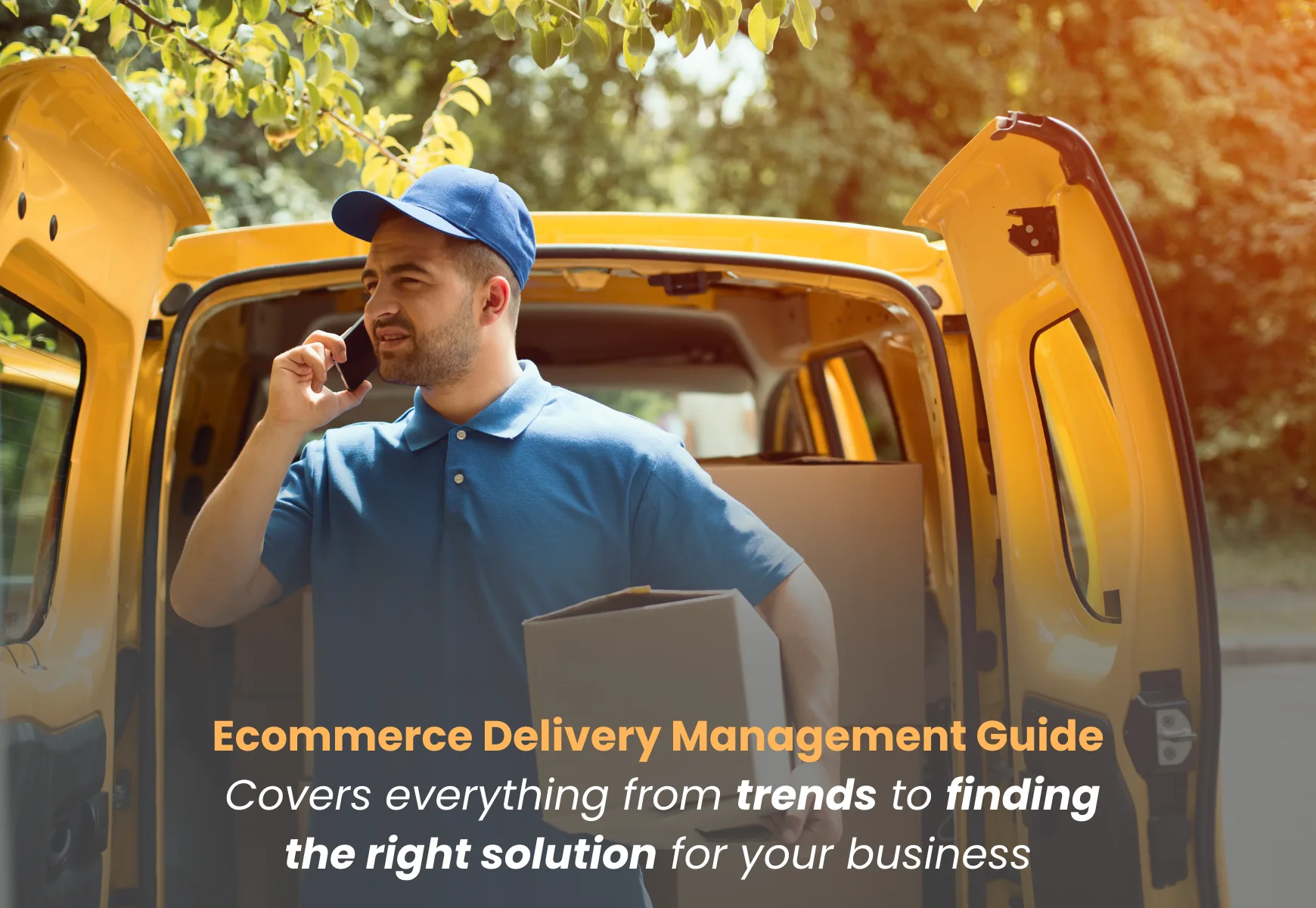
Table of contents:
2. Introduction to Ecommerce delivery management
3. What is an Ecommerce delivery?
6. Ecommerce local and international delivery
7. Ecommerce delivery management solutions
8. Factors to consider when finding your ecommerce delivery management solution
9. Ecommerce delivery management software
10. Benefits of using Ecommerce delivery management software
11. Innovations shaping ecommerce delivery
In the last few years, mobile use and access to internet services have increased. With increased access to the internet, the e-commerce industry is growing quickly. Now, why is this happening? It’s because customers now prefer to shop online.
If this keeps up, e-commerce sales globally will reach $8 trillion or even more by 2027 based on forecasts.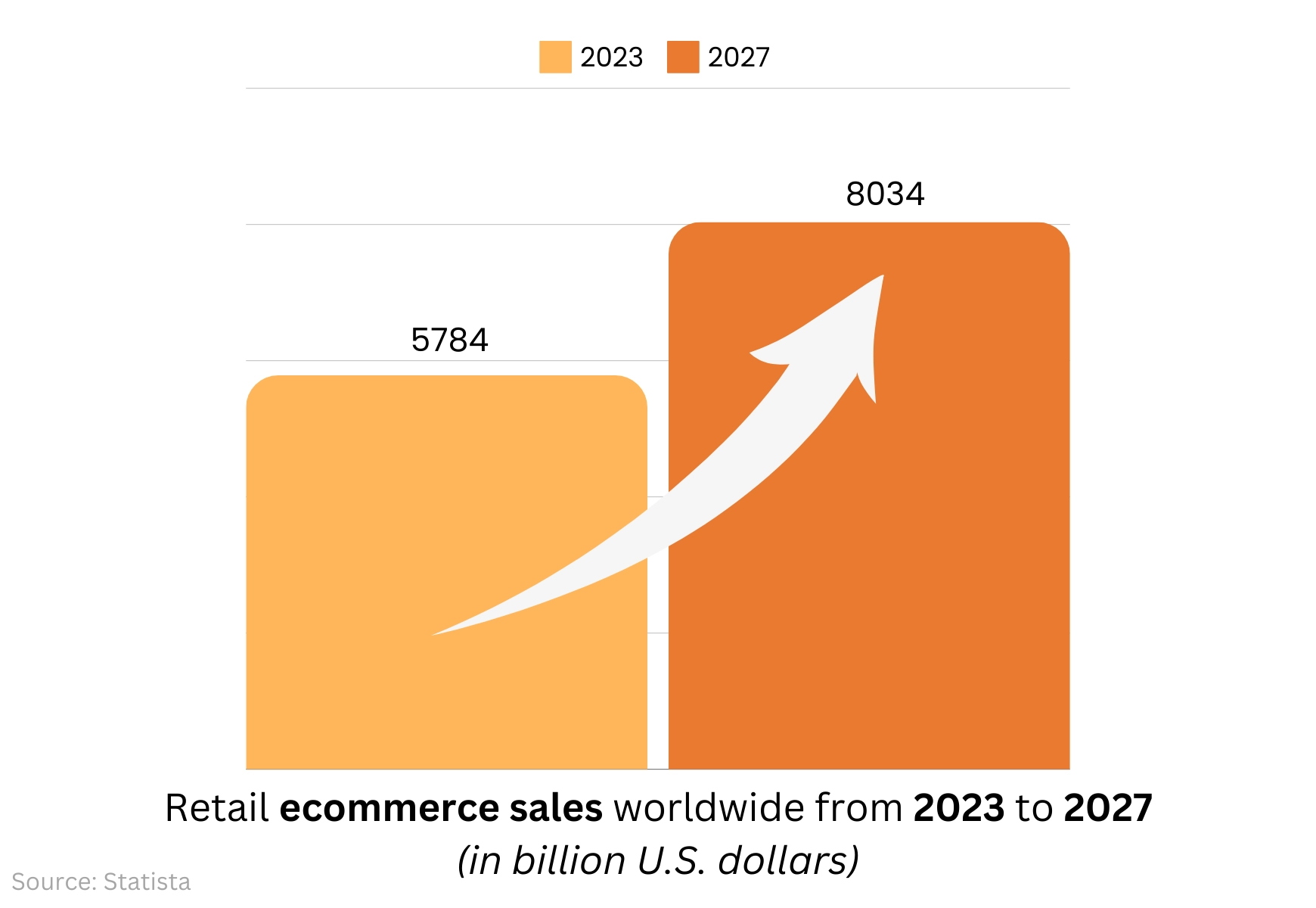
Ecommerce delivery management is important for streamlining your operations. As we’re almost halfway through 2024, it’s vital to understand the trends and practices you need to stay competitive and meet increasing customers’ expectations.
When a customer clicks "buy," a digital signal initiates a complex logistics process in a remote warehouse. Employees promptly select and securely package the item for shipment. The package then embarks on a journey, possibly via truck or airplane, navigating various landscapes.
Ultimately, a courier delivers the product directly to the customer’s doorstep. This efficient process highlights the advanced operations that make e-commerce delivery possible and ensures products arrive safely and on time. That last step of the delivery is named "last-mile delivery." Check this article on optimizing last-mile delivery to ensure this step is smooth and customers are satisfied.
How to manage? Ecommerce deliverery can be managed through self-shipping or via third-party providers, to find the right shipping option for you, check this blog article!
The world is changing, and so is the way businesses make deliveries. Here are the few trends currently being used in the ecommerce industry.
This option allows customers to receive the product on the same day. However, a premium fee must be paid for this special convenience.
Customers have become more conscious than ever about eco-friendly options. Businesses understand this need, so they now use recyclable materials for packing and optimize delivery routes to lower carbon emissions.
Advanced technologies like ecommerce AI agents, machine learning, or delivery management software are now being integrated into delivery systems. They help to predict shipping delays, optimize routes, and manage inventory better than humans. Delivery management software, such as Track-POD, can integrate with your online shop, help you manage orders, plan the routes based on available vehicles and delivery schedules, analyze all the deliveries, and provide a driver app that can scan the barcodes and collect electronic proof of delivery. This is especially convenient if you are organizing self-shipment.
To make all these tools run smoothly, businesses also need reliable ecommerce hosting. This eCommerce hosting ensures that online stores remain fast, secure, and capable of handling high volumes of traffic and transactions during peak shopping seasons.
Nowadays, customers want the freedom to choose their delivery slots so they can easily receive the package on time. This also includes in-store pickups and secure locker deliveries.
Businesses are now using local delivery networks. It is important for each business to consider all the pros and cons of self-shipment versus reliance on delivery networks. Many factors should be considered: costs, tracking possibilities, visibility, amount of daily orders, available vehicles, etc.
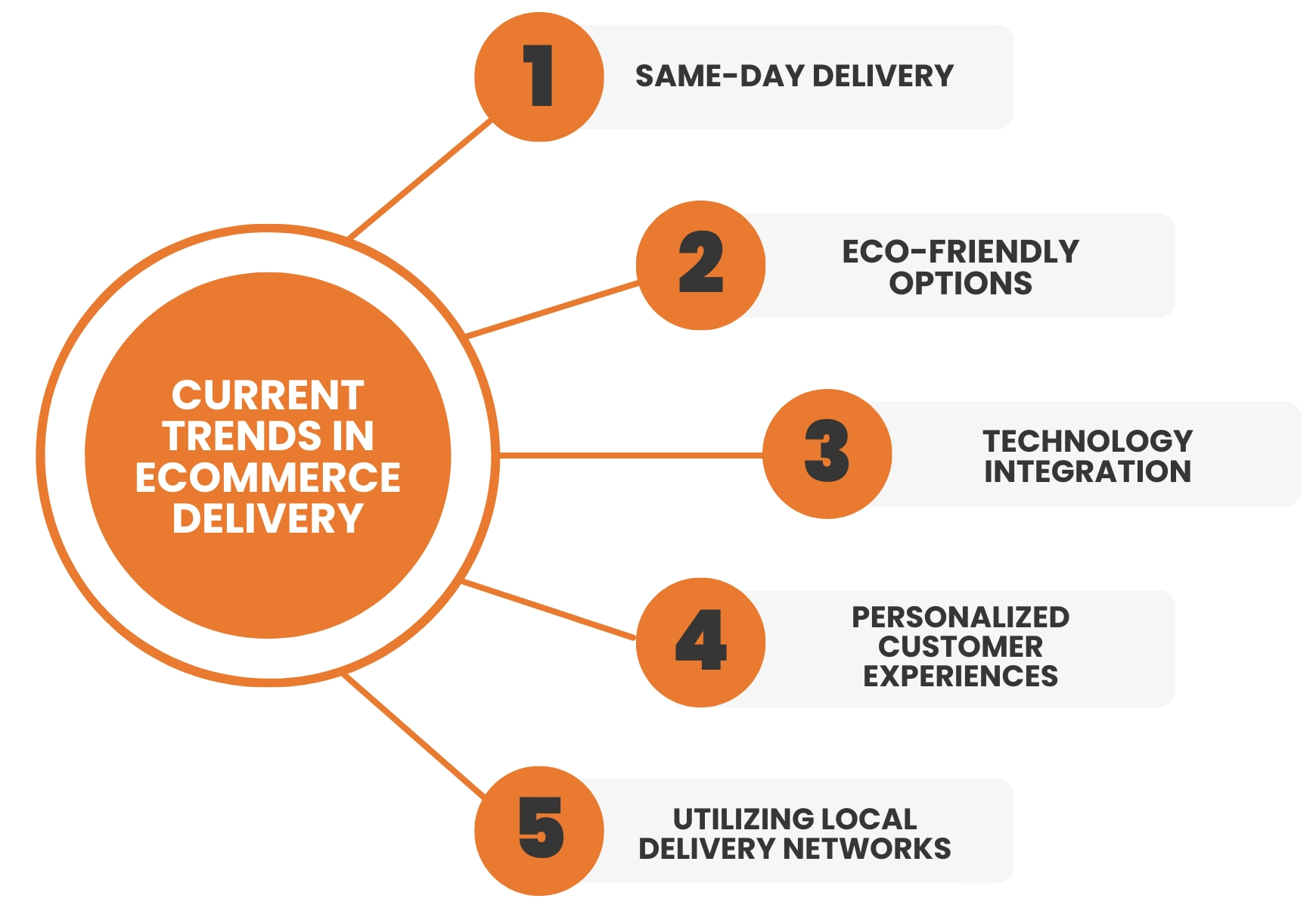
Why is e-commerce delivery management so important? It's a big deal because it’s the only way to keep your customers happy and loyal. Imagine this: today’s shoppers don’t just want their stuff fast. All they want is to know exactly when it’s arriving.
Almost every online store now sends packages far and wide; many even ship them across oceans to different countries. Being good at sending packages quickly and without costing a fortune helps you win over customers worldwide.
Ecommerce businesses cater to a wide range of customer needs by offering various types of delivery options. Getting to know these choices helps shoppers pick just the right service for their needs.
Understanding what’s popular and what’s not helps businesses set up their operations to deliver the goods just right.
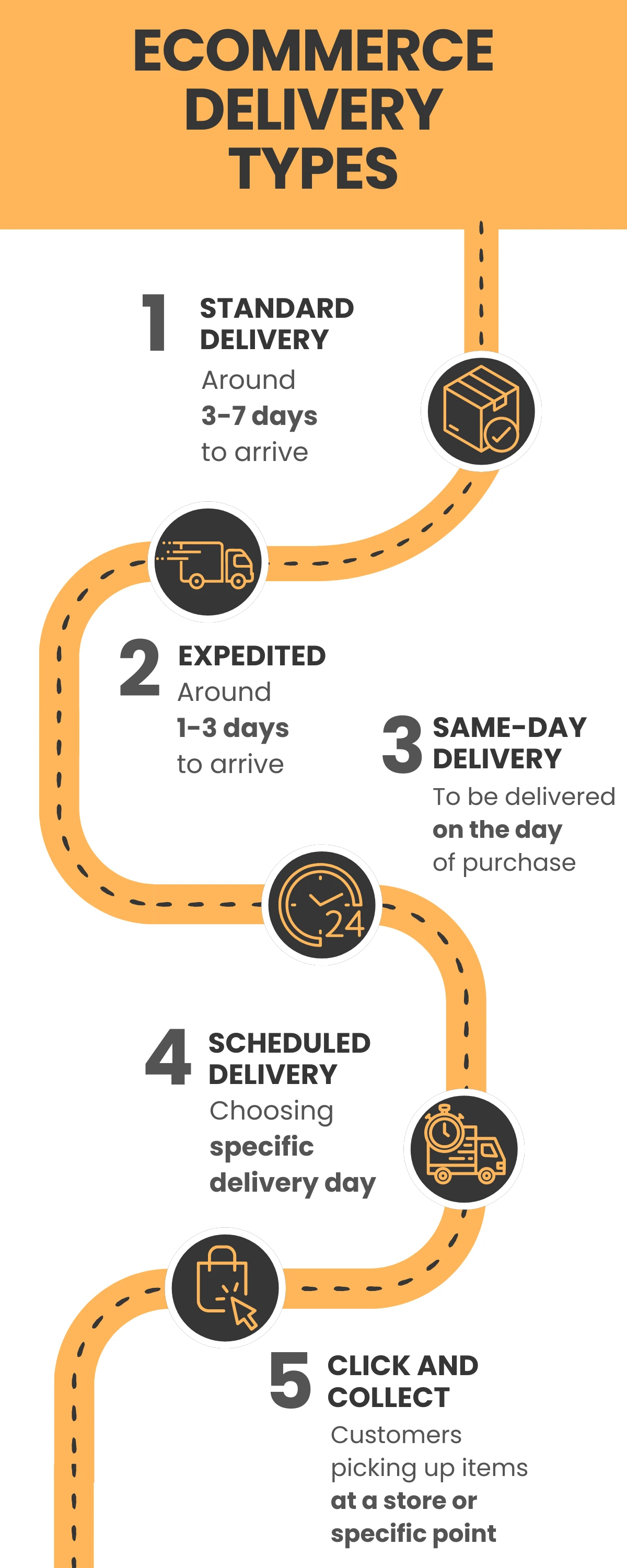
It is the go-to method where orders are sent using regular postal services or couriers. It takes 3-7 days on average for the packages to arrive.
This speeds things up for those who need their items fast. This quicker option delivers your purchases within 1-3 days.
It ensures that orders placed are delivered on that very day. This fast service is mostly available in big cities and depends on when you place your order.
With scheduled delivery, customers can pick a specific date and time for their package to arrive. It makes the whole process super convenient for customers.
It lets shoppers order online and then pick up their items at a store or specific spot. The availability of the items can mean they’re ready in just a few hours.
Creating an efficient delivery process is crucial for ecommerce success. Below are the general steps involved in the ecommerce delivery process and the factors to consider when organizing delivery solutions, including international and local deliveries.
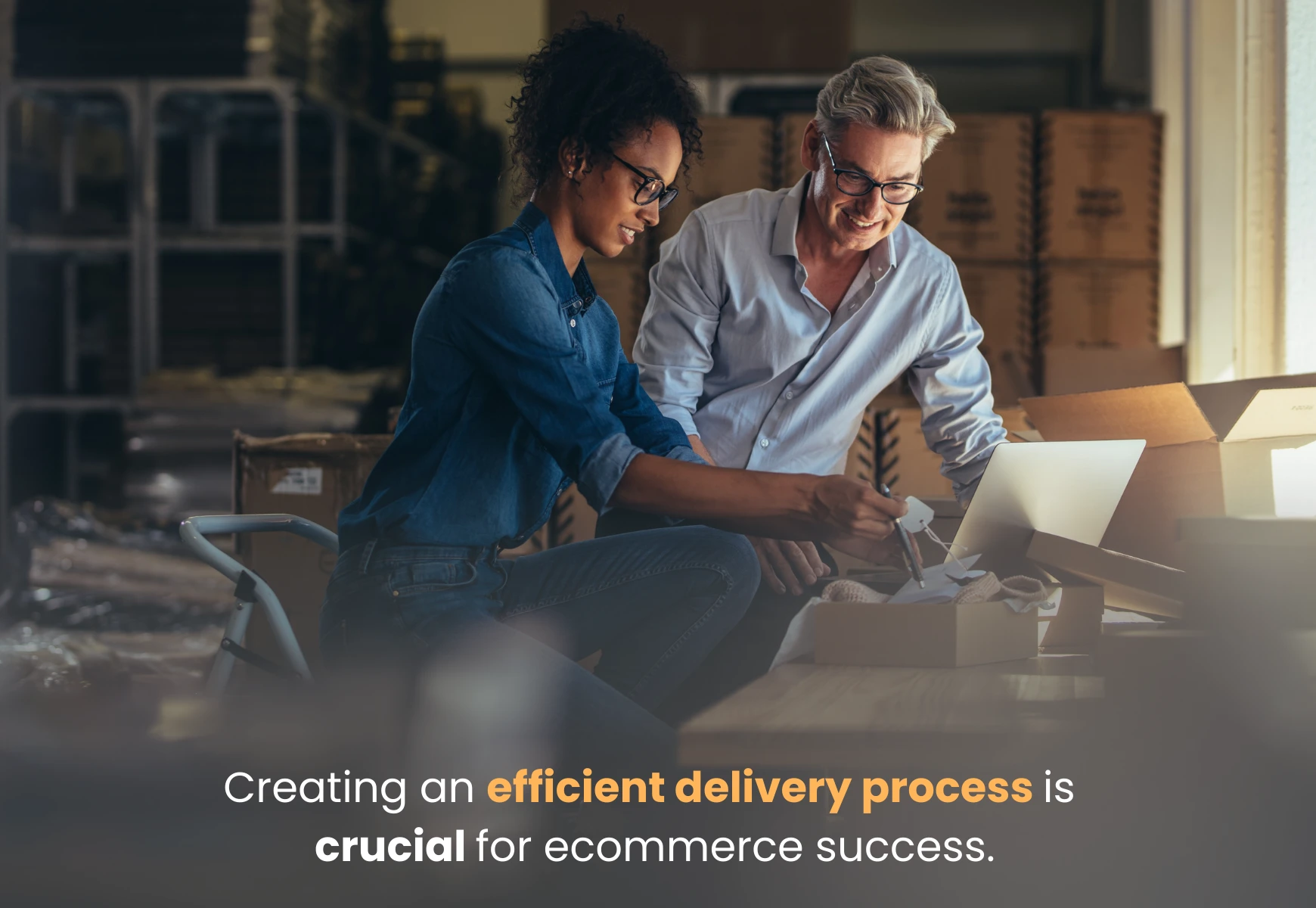
Here's a breakdown of what happens after your customers hits "buy".
You can also refer to our blog, Fulfillment logistics in E-commerce, for a more detailed explanation.
Every company prioritizes different delivery factors based on the nature of its product, making a choice on delivery solutions crucial.
If you look at a clothing company that prioritizes next-day delivery, speed is the obvious focus. Now, if you are shipping larger products like mattresses in a box, you might imagine that something like cost efficiency and scalability might be more important.
When picking ecommerce delivery solutions, here are some key things to keep in mind:
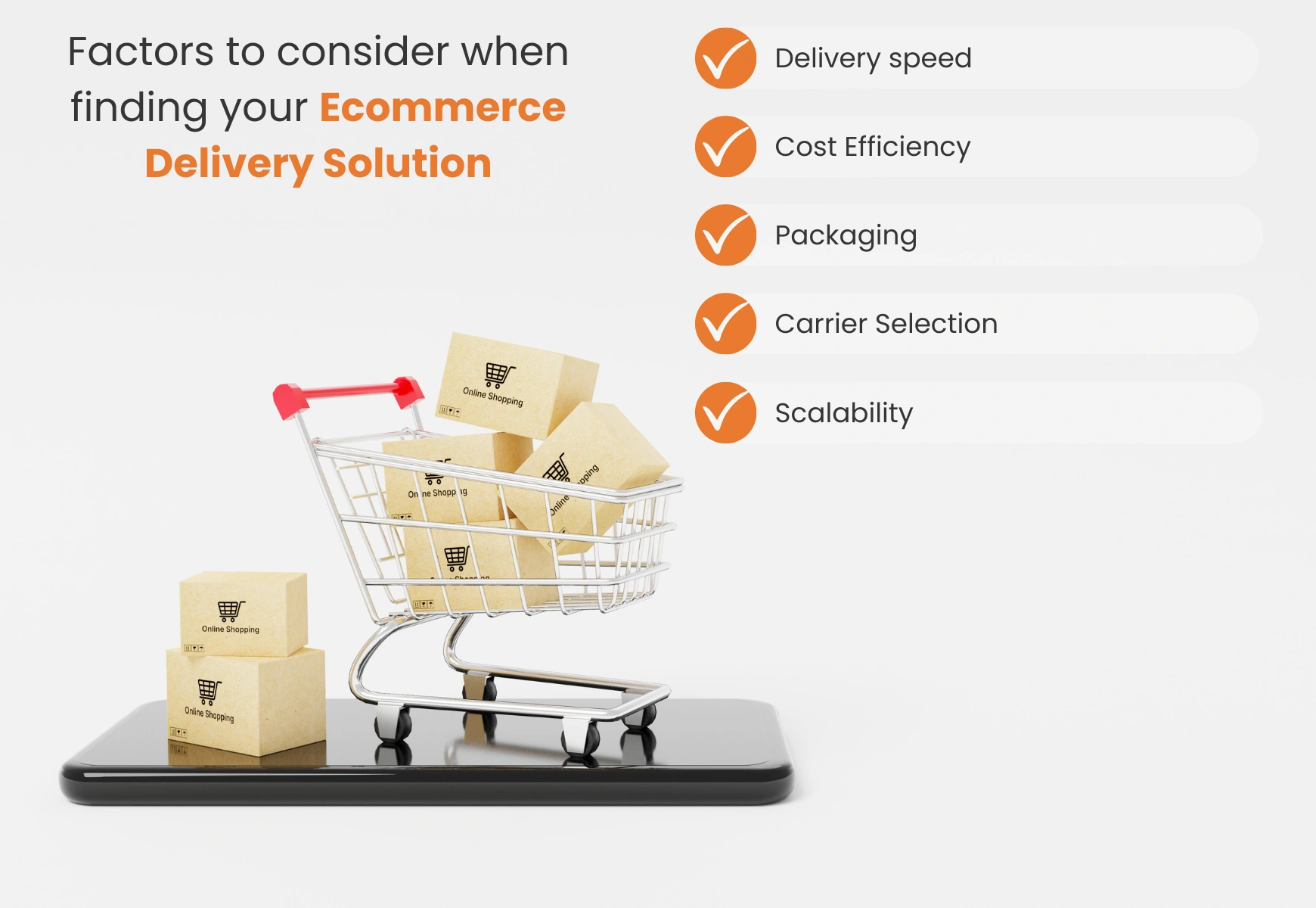
International deliveries require understanding customs regulations, choosing international shipping partners, and potentially dealing with longer transit times. Providing transparent pricing that includes customs duties and taxes can improve customer satisfaction. In B2B ecommerce, overlooking these aspects can result in costly delays and strained buyer relationships, making compliance and clarity indispensable.
Conversely, local deliveries can offer shorter transit times and lower costs. Businesses can tap into local courier services or establish their own in-house delivery fleets, giving them greater control over delivery times and enhancing service quality. This approach helps streamline operations and can lead to more satisfied customers.
Check this blog article to understand more which shipping method is right for your ecommerce business.
Last-mile delivery is the final and most crucial step in the delivery process. It directly affects customer satisfaction. If there are any errors or inefficiencies here, it can lead to delays and higher costs. By optimizing this stage, businesses can ensure packages arrive on time, greatly improving the customer experience. Getting this right is essential for making a lasting positive impression on customers.
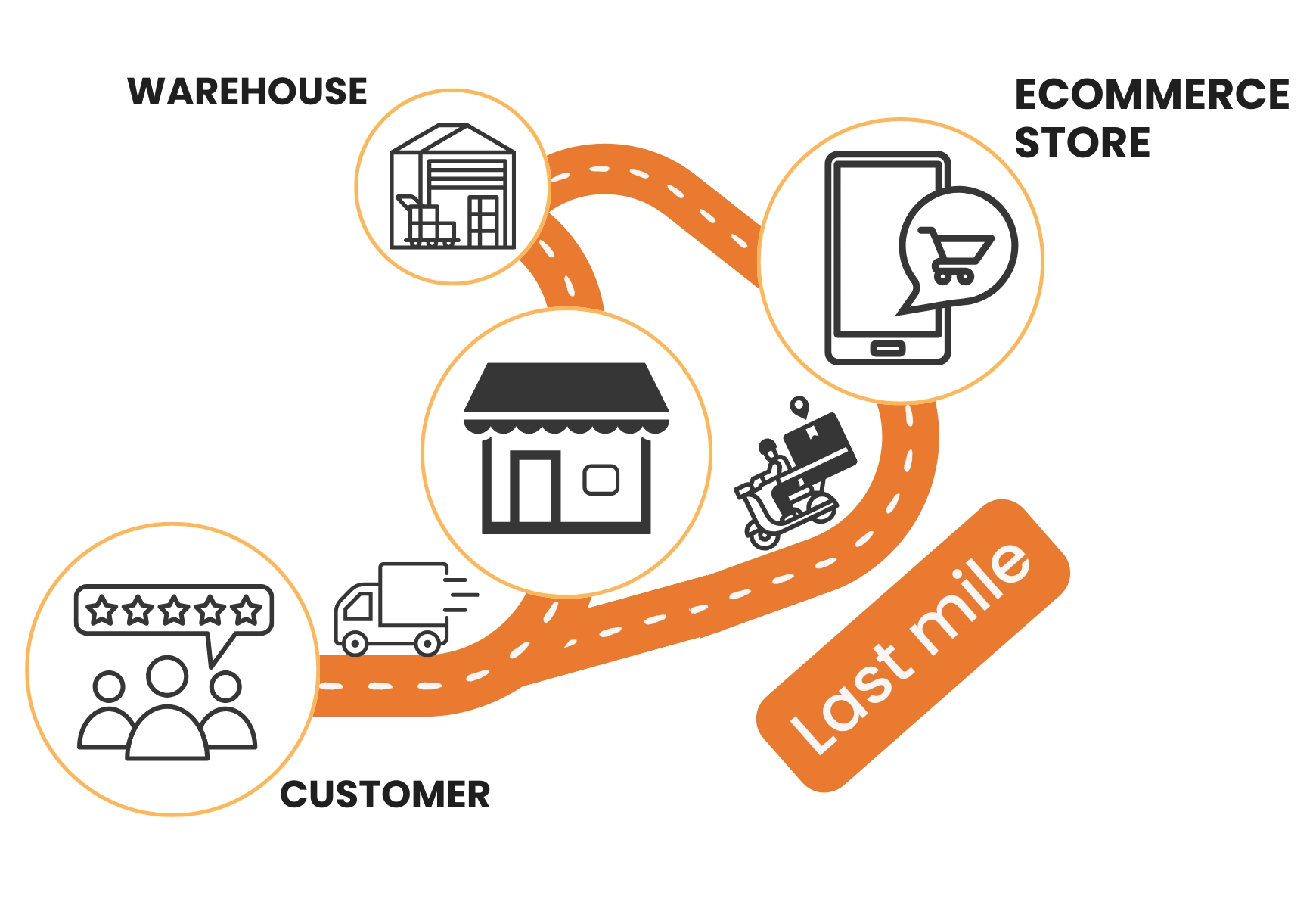
Many ecommerce businesses today utilize various content management systems and platforms to host their online stores, making API integrations crucial for streamlining processes and automating order management. By integrating APIs, ecommerce businesses can seamlessly connect their platforms with delivery management software, allowing for the direct and automated handling of orders. If you are having your internet shop on the Shopify, then check this blog article about Shopify shipping apps, that help to manage delvieries.
This automation enhances efficiency and ensures that all aspects of order processing and delivery scheduling are managed effectively through real-time data exchange. For businesses looking to incorporate such functionalities, resources like Track-POD's API provide detailed guidance on executing these integrations successfully.
For businesses keen on refining their delivery operations, ecommerce delivery management software is an indispensable asset. This software has extensive functionalities that boost operational efficiency and drive significant cost reductions. Employing such tools can transform how businesses handle their delivery processes, ensuring they operate more fluidly and cost-effectively.
In many cases, an eCommerce development company is involved in developing or customizing these solutions to fit specific business requirements.
As ecommerce operations scale, delivery performance is only one part of the customer experience. Teams also need to keep storefront updates, product pages, and customer-facing content aligned with changing delivery options and expectations. In practice, many growing ecommerce brands rely on external creative support like Superside to handle ongoing web and visual updates, so internal teams can stay focused on operations and logistics.
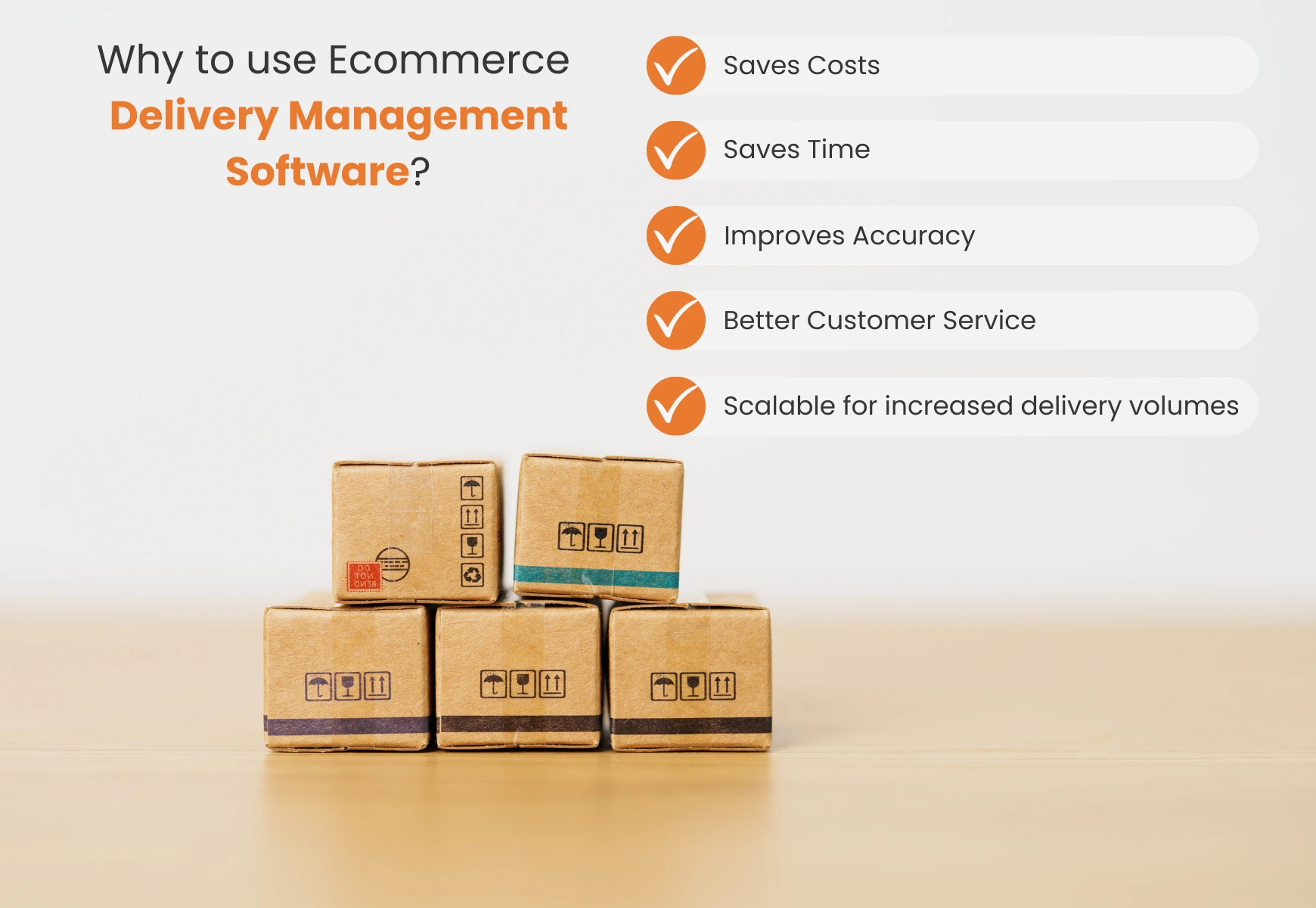
Track-POD stands out as an effective ecommerce delivery management solution, carrying a variety of features, such as:
We recommend registering for a demo to see how Track-POD can help you grow your business. This will let you explore the software's features in a real-world setting and see how it fits with your existing systems. Register for a demo at Track-POD Now.
Additionally, to get a broader understanding of what Track-POD offers, you can watch an informative video below:
E-commerce delivery is rapidly evolving. These changes are revolutionizing how the products are sent and monitored and transforming how products are delivered, impacting every facet of the e-commerce industry.
Big warehouses use more robots and automation to help with jobs like picking and packing. This tech cuts down on mistakes and speeds up order processing. Faster processing means quicker deliveries, keeping up with the fast pace customers expect today.
E-commerce businesses use big data to make better delivery plans and understand what customers might buy next. Predictive analytics lets them adjust their stock levels to prepare for busy times. Plus, software that optimizes delivery routes ensures products are delivered quickly and cheaply. This makes operations smoother and keeps customers happy by ensuring products are always available.
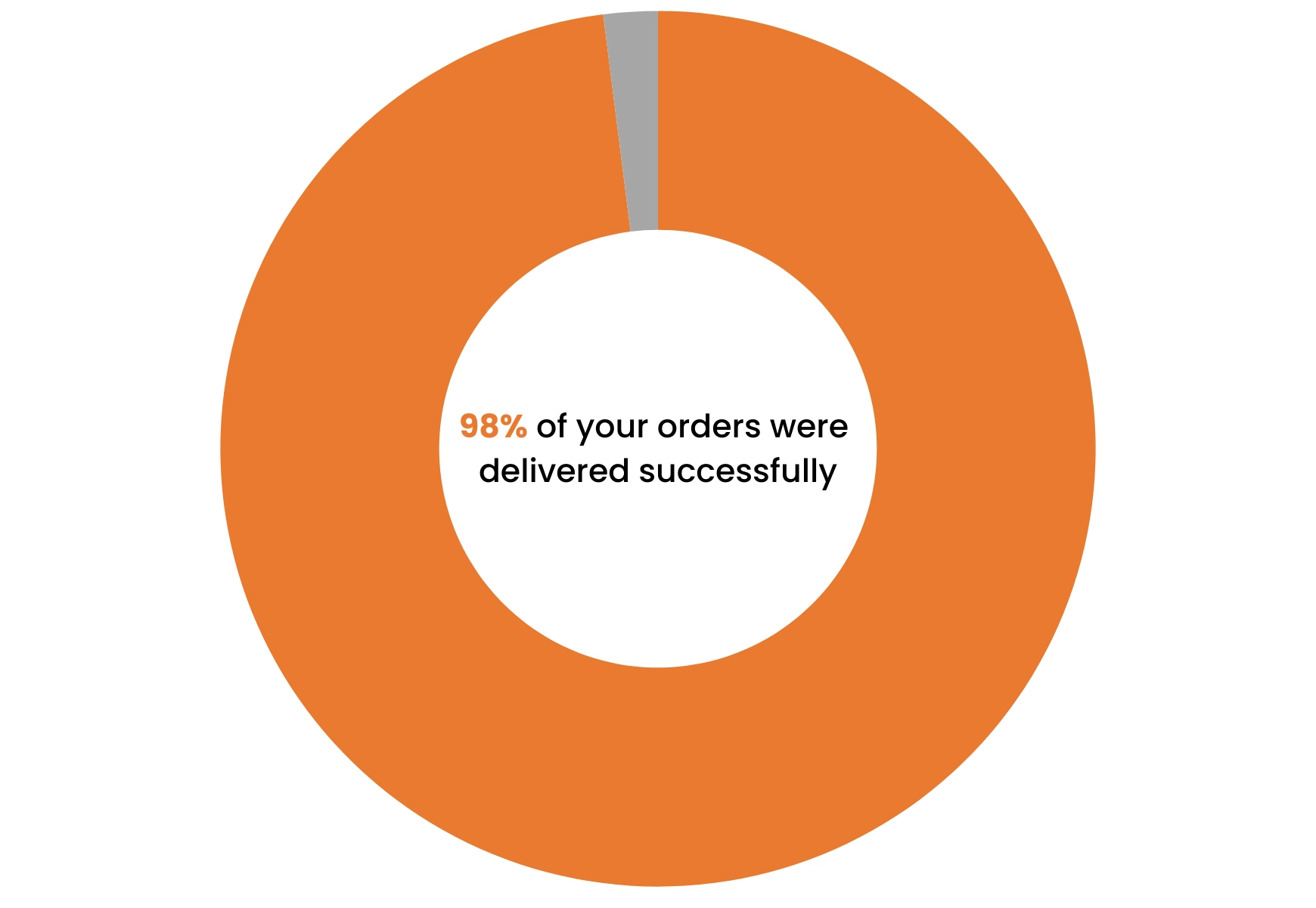
Drones and autonomous vehicles are changing the game for delivering packages, especially to hard-to-reach places or through busy city traffic. These cool new tools can make deliveries much faster and cheaper, giving businesses that start using them early a leg up.
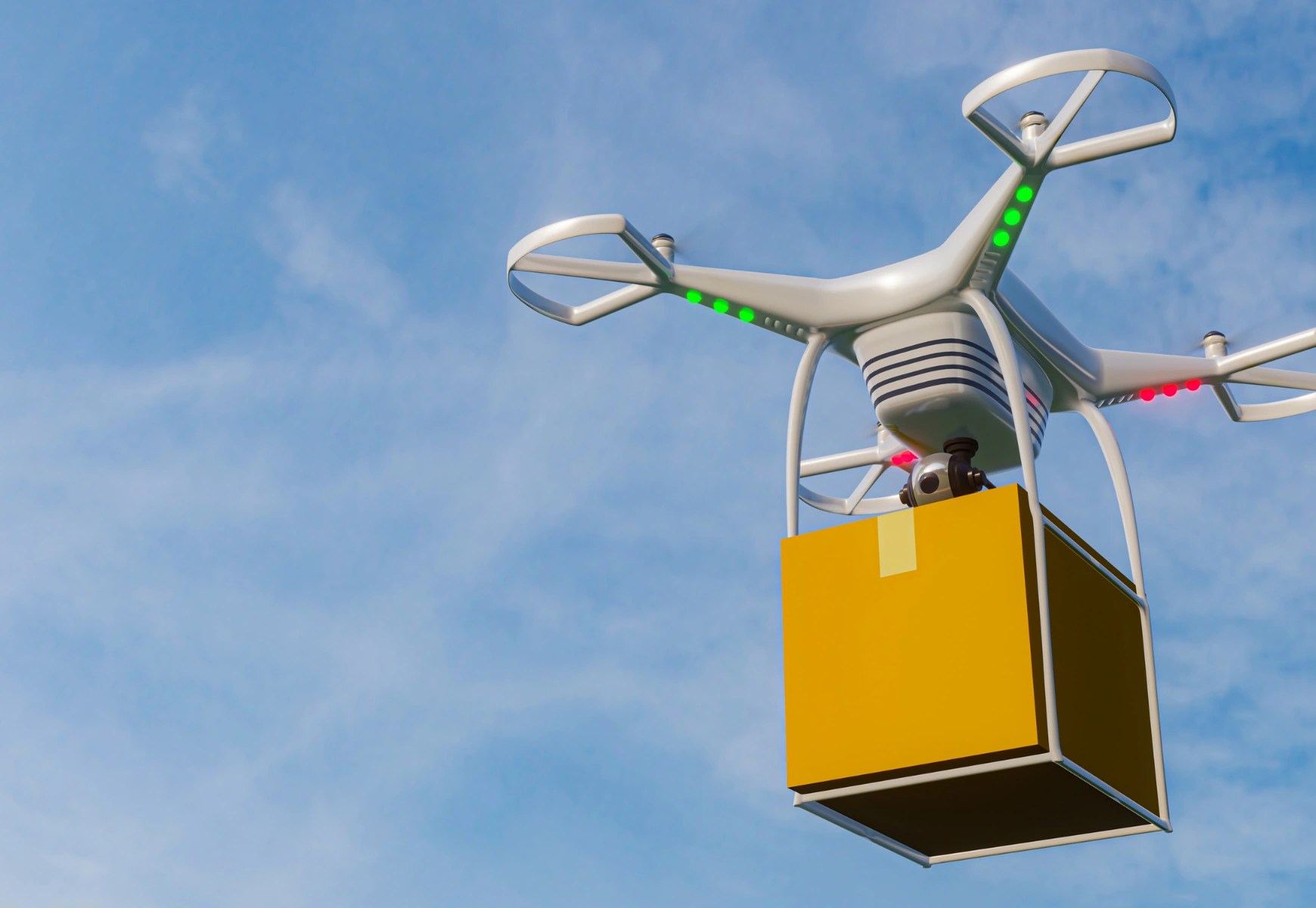
AI and chatbots on ecommerce sites are transforming customer service. They provide updates about orders in real time and quickly handle any questions or issues customers might have. This tech improves how businesses communicate with customers, cutting down on wait times and solving problems fast, which makes for a much better customer experience.
For companies seeking to implement similar solutions, partnering with a custom AI development company can help build intelligent tools that automate delivery processes, enhance data analysis, and personalize customer experiences at scale.
As ecommerce grows, staying updated with tech like drones and AI customer service is key. These tools boost efficiency and help meet customer expectations, keeping businesses competitive. They make operations smoother and open new ways to grow and connect with customers online.